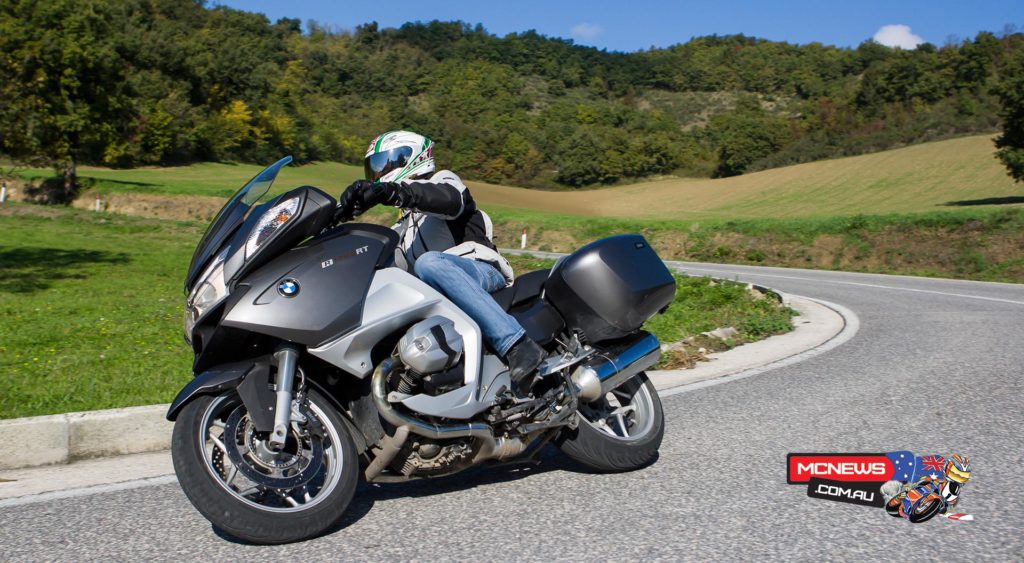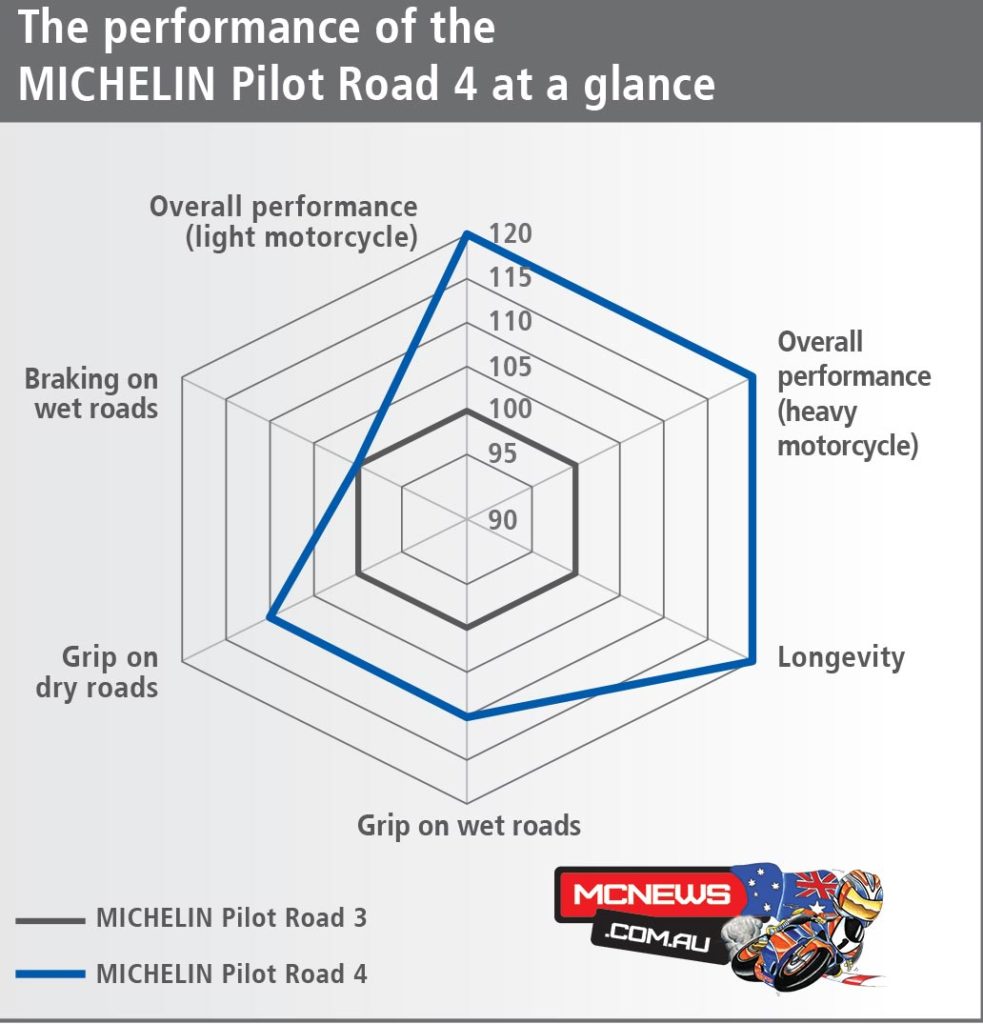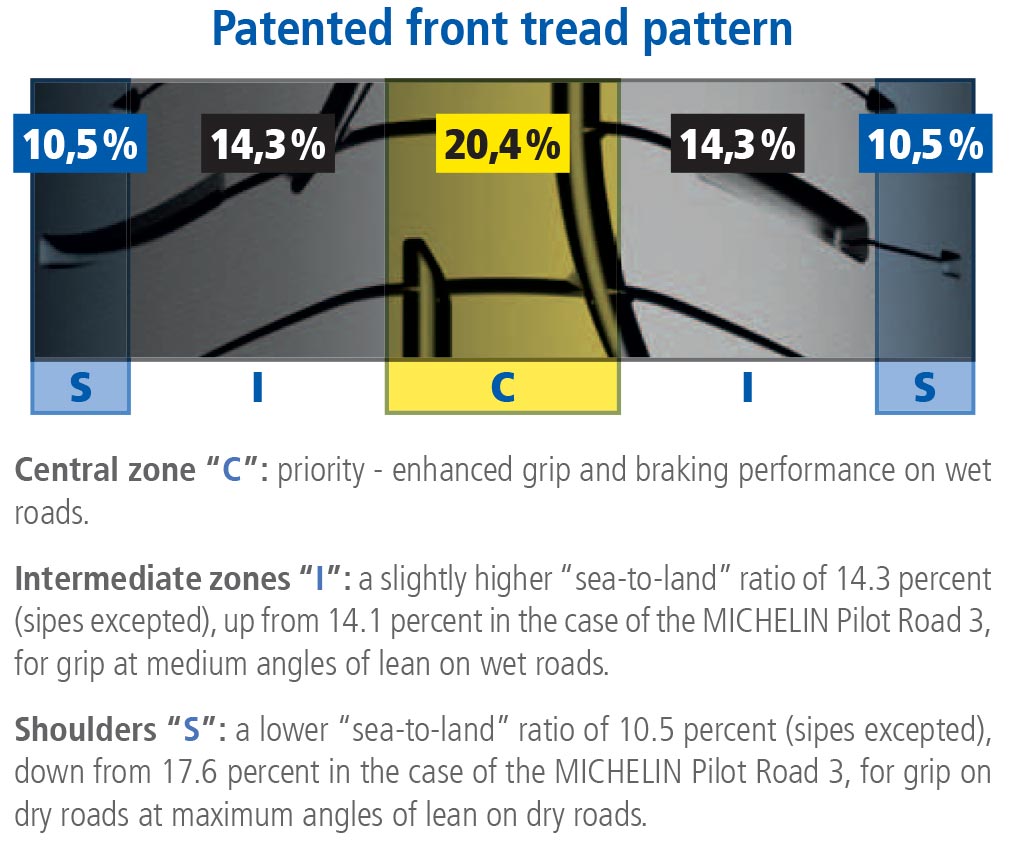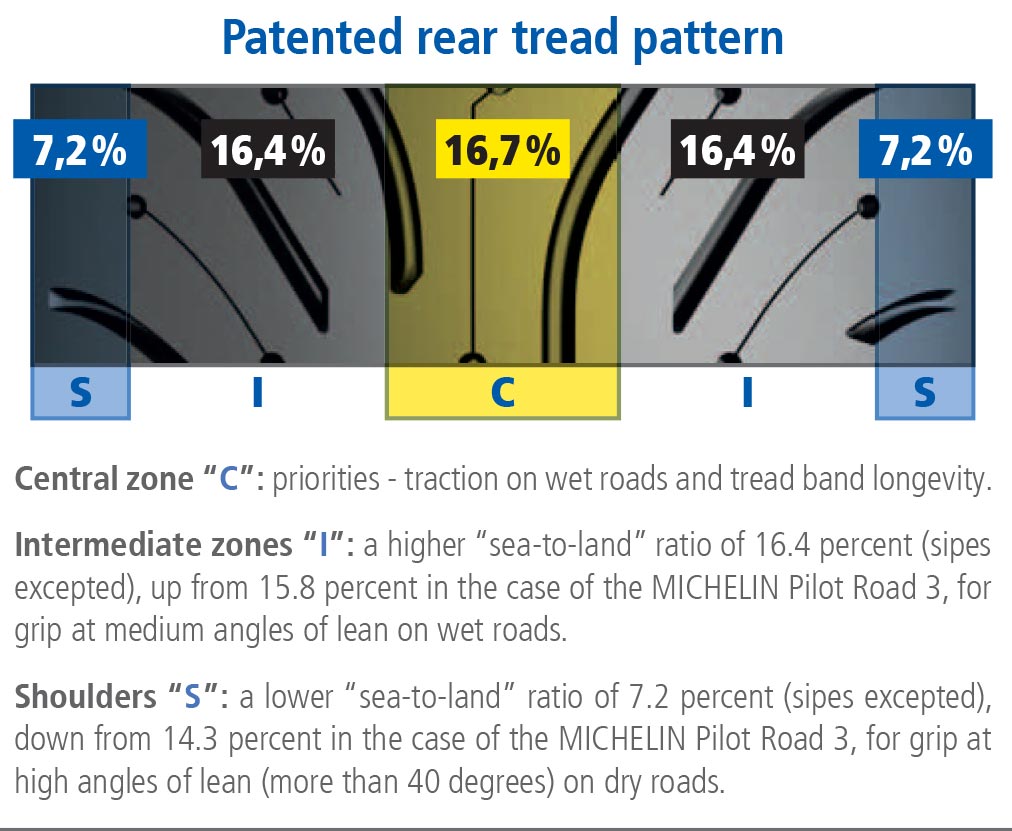Michelin Pilot Road 4 – Australia’s bigges selling motorcycle tyre gets more performance and longer life
By Trevor Hedge
Michelin’s Pilot Road 2 was a massive success for the French manufacturer. Offering a great combination of grip and longevity, Michelin Pilot Road 2 quickly became the default choice of rubber for most Australian motorcyclists.
Its successor, Michelin Pilot Road 3, is by far Australia’s top selling motorcycle tyre, and is, in fact, the biggest selling motorcycle tyre in the world. Michelin Pilot Road 3 brought unprecedented levels of wet weather performance and also introducd ‘siping’ to mainstream motorcycle tyre production. The wet weather performance advancement is completely unequivocal. Anybody that has ridden treacherous conditions on Pilot Road 3 will vouch for their amazing wet weather performance. I even rode in snowy conditions on Pilot Road 3 and felt safe doing so.
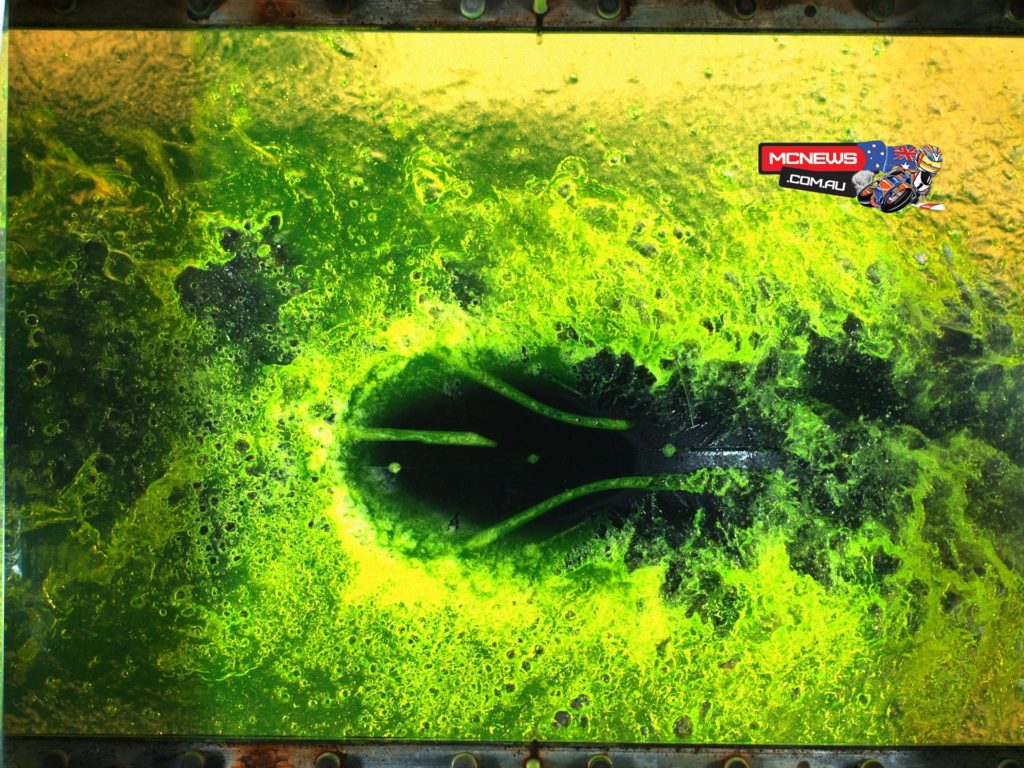
Not only is it the tread pattern in these tyres that helps to displace water, but also functional polymers in the rubber compound that have a chemically charged reaction with water, actually repelling water through a chemical reaction, effectively cutting straight through water film to the road surface below. Across their motorcycle and car tyre research departments Michelin have 1300 people working on compounds alone to come up with formulations like these.
With further lessons learned since the introduction of Pilot Road 3, and taking onboard rider feedback from their experiences with the tyre, it has taken Michelin three years to develop the new Pilot Road 4. The product of over two-million kilometres of wear testing across 60 different motorcycle models, throughout all regions of the world in temperatures ranging from -5c to +45c.
Riders familiar with Pilot Road 3 have reported, myself included, that during aggressive riding involving lots of hard brake application, the sipes started to cup on the edges. Michelin has taken this onboard and developed what they have called XST (X-Sipe Technology) and XST+.
Effectively, XST sees Michelin add circular reservoirs at the end of each sipe to help catch the water displaced by the sipe which is then flung out of these pockets as the tyre rotates out of the water. XST+ adds chamfered edges to the siping to help preserve the cutting through effect of the sipes as the tyre wears over time. Thus extending the wet weather performance benefits of siping much longer throughout the tyres life. In simple terms. the sipes help the tyre cut through the film of water on the road which the rubber edges can then grip while the water is channeled away in the sipes.
In a further development, Pilot Road 4 now comes in three different versions to cater for different styles of motorcycle.
Pilot Road 4 – Suitable for most mainstream road going motorcycles and available in most popular sizes and aspect ratios.
Pilot Road Trail – Another version of the Pilot Road 4 designed for larger adventure-touring motorcycles when used only on-road. KTM 1190 Adventure or BMW’s R 1200 GS are examples of the machines intended for this variant of the Pilot Road 4. Produced in sizes to suit the latest generation of high performance adventure machines, the Pilot Road 4 Trail offers a higher percentage of medium compound rubber than the Pilot Road 4 GT or the regular Pilot Road 4, and a softer compound rear.
Pilot Road 4 GT – A higher strength version of the Pilot Road 4 catering for large sport-touring motorcyles likely to carry a pillion passenger and/or luggage. Bikes like Yamaha’s FJR1300 or BMW’s R 1200 RT for example.
The Pilot Road 4 GT differs in construction from the other two variants with what Michelin has dubbed ‘2AT’ or ‘Dual Action Technology’. The product of a fove-year research and development project Michelin’s 2AT combines the load carrying strength benefits of bias construction with modern radial technology to effectively cross hatch the two methods of construction into the one tyre. This process is not as easy as it sounds and Michelin not only had to develop this process of construction but then also had to design and build the machines necessary to put this type of tyre together. Thus the Pilot Road 4 GT is much, much more than a stiffer sidewall to cope with extra loads, it is a completely re-engineered tyre from the first step of production specifically for the extra demands that today’s high-performance luxury touring motorcycles put on their tyres. This not only helps performance and tyre longevity, but also stability at speed when carrying heavy loads.


Of course the Pilot Road 4 also incorporates Michelins now long running dual-compound construction. Other manufacturers now also offer dual-compound tyres but it was Michelin that first introduced it in 500cc Grand Prix racing in 1994 and brought it to the road in 2006 with the Power 2CT and has developed this much further in recent years with 2CT+.
The Pilot Road 4 and Pilot Road GT see the medium compound in the middle 40 per cent of the front tyre, the rear tyre adds another harder again compound in the middle 20 per cent of the rear tyre, while the 40 per cent either side of the centre utilises the medium compound. The front Pilot Road 4 and Pilot Road 4 GT utilises a softer compound than the sides of the rear tyre, on the 30 per cent either side of the centre-line. Effectively this means the front tyre has softer shoulders than the rear tyre, and the rear tyre not only has a harder compound in the centre but its side compounds are also slightly harder than the front. In racing terms you could translate this as the front being a medium-soft, and the rear being a hard-medium. Hopefully that doesn’t prove too confusing and the diagrams further down the page will help you visualise this further.
The Pilot Road Trail does not feature the hard compound in the centre of the rear that the Pilot Road 4 and Pilot Road GT exhibit. The Pilot Road Trail presents the medium compound across the centre 60 per cent of the rear tyre, and the soft compound on the remaining 20 per cent either side of the medium compound centre. Thus the Pilot Road Trail is primarily, on balance, a softer rear tyre than the regular Pilot Road 4 or Pilot Road 4 GT, but a slightly harder front due to a higher proportion (60 per cent) of medium compound to soft than found on the Standard and GT versions.

Overall, Michelin are claiming a 20 per cent improvement on tyre longevity compared to the Pilot Road 3.
We are eager to try them on for size ourselves but we also welcome your own feedback below at the bottom of this article if you have something to say.
[youtube id=”kUzcxoBK3sg” width=”853″ height=”480″]
